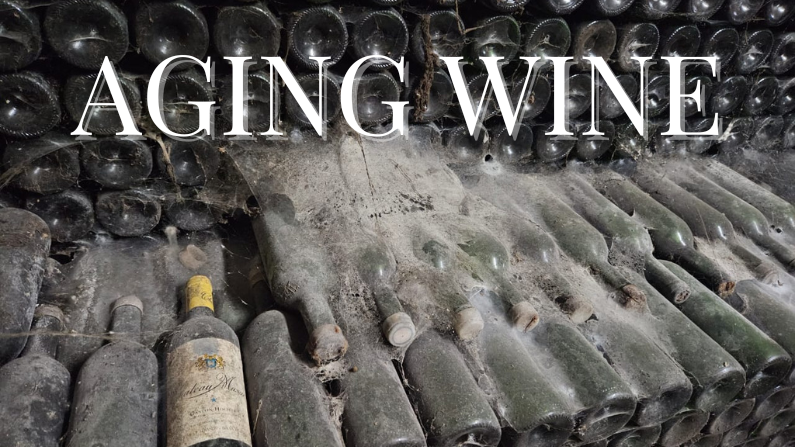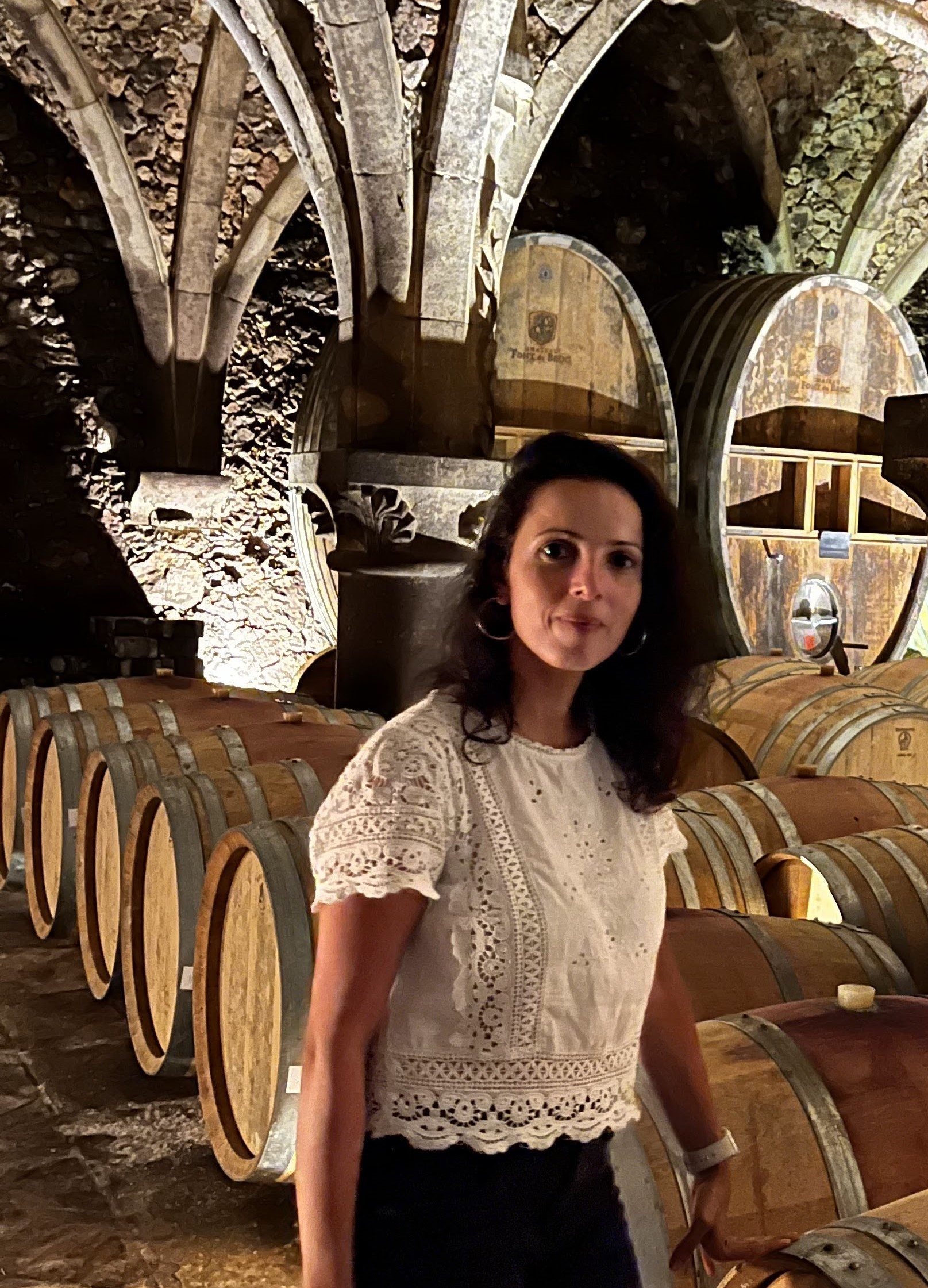
Aging Wine; Which wines age gracefully and what do they evolve into?
Aging Wine; Which wines age gracefully and what do they evolve into?
Wine’s destiny is to be enjoyed at its best. That might include drinking wine at the recommended temperature or matching it with the right food, but the prerequisite remains: opening the bottle when it reaches its full potential.
The vast majority of the wines available to consumers are at their best when they are young. They are meant to be enjoyed right off the shelf or up to 5 years for red wines and 3 years for white. But what about the wines that get better with time and with a little bit of patience laying down the bottle for extended aging, can evolve from good to ‘quite the experience’? This article explains which wines to age, why some wines have the capacity to age gracefully and what happens to them as they “come of age”.

Eligibility to age
Eligibility to age
Historically, wine intentionally stored to age “came into practice only after the eighteenth century, when cylindrical bottles that could be laid on their sides came into widespread use.” That is according to Karen MacNeil’s ‘The Wine Bible’. After that, these wines that are stored as such- with tight closures- and consumed after some time, must have gained favor among wine drinkers and became a sign of luxury. This tradition has been carried along to our modern day.
Wines that are meant to age are crafted accordingly. They need to be produced from quality grapes (for flavor complexities), have a good tannin structure, the right amount of acidity, and residual sugar or balanced alcohol levels. When these wines are produced, they should be complex and balanced to begin with to carry and develop this complexity into their “old age”.

Which wines to age
Which wines to age
Some grape varieties like Cabernet Sauvignon and Nebbiolo for example, can potentially produce wines that can age better than others, thanks to their naturally high tannins, acidity, and concentrated flavors. Some white grape varieties also have a bigger capacity to age than others. Riesling wine, for example, with its intense flavor, piercing acidity and residual sugar can also potentially age more than 30-50 years, developing a new set of aromas and flavors.
It’s important to note here that even though some young white wines also have high acidity and pronounced flavors, they are not recommended to be aged at all. These wines that leverage on their fruity, fresh and crisp character, such as Sauvignon Blanc, Viognier, and Provençal rosé, can lose their freshness and vibrancy- their main ‘charm’- with time, so ideally should be drunk as young as possible.
Some of the white wines that generally have the potential to age well are Riesling (especially from Germany), Semillon (especially from Hunter Valley), Chenin Blanc (especially from Loire Valley), Furmint, white Bordeaux- style blends, white oak aged Rioja, oak aged Sauvignon Blanc and fine Chardonnay. In addition to Tokaji and Sauternes for sweet wines.
As for the reds, good quality wines are known to age well, however for extended aging, a safe bet would be fine Cabernet Sauvignon from California, top Syrah wines, Super Tuscans, the good wines of Piedmont and of course Burgundy Grand Cru, and First Growths/Cru Classé of Bordeaux.

Wines ‘obliged’ to age by style and law
Wines ‘obliged’ to age by style and law
Some wines are already aged when they hit the market, so consumers are already enjoying them with a bit of age on them.
Some must be aged to achieve the style they are known for, such as Madeira, Vin Jaune of Jura- France, the sweet Tokaji Aszú from Hungary, and Age indicated Tawny port.
Other wines must be aged by law, before they are released to the market, probably to preserve the premium quality that becomes synonymous with these wines worldwide. Such wines are:
Barolo DOCG:
must be aged for a minimum of 3 years before release, 18 months of which are in oak barrels
Barbaresco DOCG:
must be aged for 2 years, 9 months of which are in oak
Chianti:
Chianti Classico must be aged for 12 months before release; Chianti Classico Riserva DOCG must be aged for 24 months with at least 3 months of bottle aging and the rare Gran Selezione must be aged for 6 months longer
Rioja:
Crianza: has a minimum total aging of 24 months, 6 months of which are in oak; Rioja Reserva should be aged for 36 months, 12 of which are in oak; Rioja Gran Reserva should undergo 5 years of total aging with a year and a half spent in oak barrels. Rioja white and rosé are also mandated by Spanish law to be aged before release
Some of these wines can improve further in the bottle once purchased, given they are stored under the right conditions.

What happens to aged wine: Change in color texture and flavors
What happens to aged wine: Change in color texture and flavors
As wine ages, it witnesses a transformation in color, texture, and aromas/flavors. Red wines lose color and become smoother while white wines gain color and are perceived as being more oily. Aromas are mainly transformed from fresh fruity/floral/herbal notes (also known as primary aromas) to more cooked and dried fruits, spicy and earthy notes (also called tertiary notes).
Aged red wines experience:
- Loss in color as they get paler from ruby or purple color to garnet and tawny/brown, in the case of very old wine
- Smoother texture as the tannins seem to soften and become “gentler”
- Development in flavors and aromas where there is a change from primary and secondary aromas (blackberry, plum, strawberry, vanilla, and coconut) to more tertiary aromas like dried and cooked fruits (fig, prune, cooked blackberry). Some notes also indicate prolonged bottle aging such as cigar box and tobacco (mostly associated with Cabernet Sauvignon), smoke and cured meat (Syrah), sour cherry and rose (Nebbiolo and Sangiovese), forest floor and mushroom (Pinot Noir), leather, truffle, and tar (Barolo).
Aged white wines experience:
- A richer color from lemon to deeper gold or amber
- A more viscous and oily texture
- A transformation from fresh fruit to dried fruits and nutty flavors. Some notes are associated with specific old whites as well such as petrol, beeswax, pine for aged Riesling and chamomile for aged Chenin Blanc.
It’s noteworthy that sweet wines, like the premium Sauternes for instance, can live a very long life. Sweet wines becoming as such, particularly by the effect of noble rot (botrytized grapes) can age for decades.

Rules to laying down wine
Rules to laying down wine
The French call the wines to keep for aging ‘Vins de Garde’. But ‘guarding’ these wines into their old age has rules and proper storage is key for the wine to “age gracefully”. Bottles should be kept in a cool and stable temperature away from light and vibration and lying on their sides, to keep the cork moist and prevent it from drying up/cracking and letting oxygen in.
Experts say any wine that is done right can be kept for extended aging. Street wisdom says: “you might want to go for wines over 30 dollars”. But at the end, it always starts and ends with quality. Like the great Jancis Robinson says: “Ageability is recognized as one of the markers of wine quality”.



Rana is a certified WSET3 and French Wine Scholar. She is a forever student with a passion for wine stories and converting wine drinkers to enthusiasts following their own wine journeys. Rana comes from the ancient land of wine Lebanon and currently lives in Dubai with her other two passions, her kids.
IG: @thewineofthings
Website: https://thewineofthings.com

